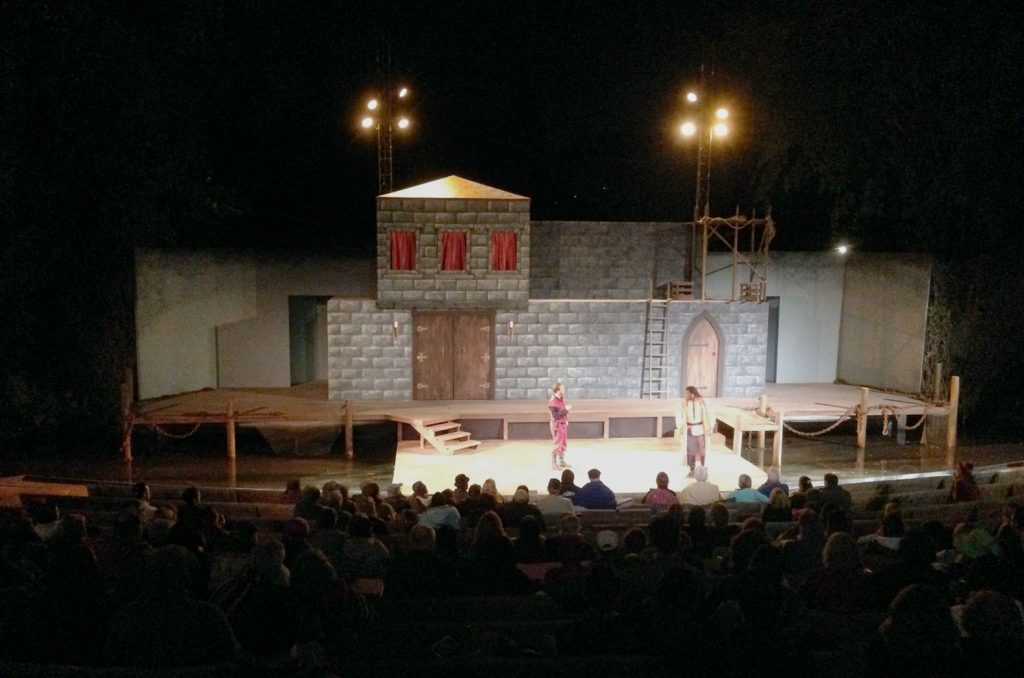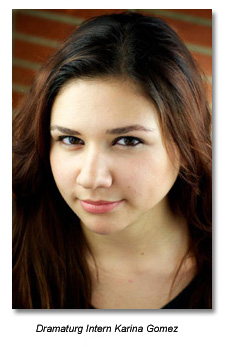
Karina Gomez, your faithful dramaturge associate here, to give you the word on what’s going on here in the making of Marin Shakespeare’s Romeo and Juliet. As a recent undergraduate from UC Berkeley with a BA in English and a minor in theater, I am really excited for this chance to act as an associate dramaturgy for this production. I really hope to enrich your experience in seeing this production, by telling you about some of the interesting post production being done in preparation for the show. Having access to the inner workings of this production, from attending the table read to watching the run of rehearsals, I’ll take you behind the scenes to all the drama as we work our magic to bring Shakespeare’s Romeo and Juliet to life!
- Words…Words… Oh Look More Words!
- Reading, Prodding, and Dramaturgy(ing) Play
- Attending the First Production Meeting of Romeo and Juliet
Words…Words…Oh Look More Words!
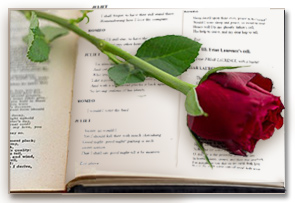 In the earlier stages of production, there was a great concentration on the play’s text to give actors a better idea on how to speak the written word to pay homage to the work’s origin. Learning such things may appear tedious and maybe even boring, but listening in on our dramaturge’s insight on Shakespeare’s use of prose in the play was actually quite interesting. Interesting enough that I wanted to share some of what I learned, and how the actors themselves can possibly be utilizing this information for their own parts. Perfect teachings for the production’s intent of emphasizing the heat of passion, because what better way to do this then to put some focus on the performance of arguably some of the most beautiful love prose ever written by Shakespeare’s hand.
In the earlier stages of production, there was a great concentration on the play’s text to give actors a better idea on how to speak the written word to pay homage to the work’s origin. Learning such things may appear tedious and maybe even boring, but listening in on our dramaturge’s insight on Shakespeare’s use of prose in the play was actually quite interesting. Interesting enough that I wanted to share some of what I learned, and how the actors themselves can possibly be utilizing this information for their own parts. Perfect teachings for the production’s intent of emphasizing the heat of passion, because what better way to do this then to put some focus on the performance of arguably some of the most beautiful love prose ever written by Shakespeare’s hand.
Shakespeare’s Poetic Scribbles
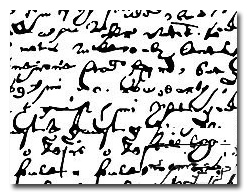 Around 1593 the theater world took a bit of a hiatus to prevent further spread of infection due to the plague, meaning a lot of writing time for our playwright. This is why I say “scribbles” for surely this was a time Shakespeare experimented and played with his writing, especially dabbling with poetry. After all it was around this time that he published some of his most famous sonnets including “Venus and Adonis” and “The Rape of Lucrece”, featuring his ever famous use of iambic pentameter. Naturally he began to incorporate these techniques into his plays, including “rhyme verse” inRomeo and Juliet. You’ll notice yourself that a lot of the dialogue rhymes, especially in the most heated of moments whether in love or hate.
Around 1593 the theater world took a bit of a hiatus to prevent further spread of infection due to the plague, meaning a lot of writing time for our playwright. This is why I say “scribbles” for surely this was a time Shakespeare experimented and played with his writing, especially dabbling with poetry. After all it was around this time that he published some of his most famous sonnets including “Venus and Adonis” and “The Rape of Lucrece”, featuring his ever famous use of iambic pentameter. Naturally he began to incorporate these techniques into his plays, including “rhyme verse” inRomeo and Juliet. You’ll notice yourself that a lot of the dialogue rhymes, especially in the most heated of moments whether in love or hate.
Ironically, in addition to the lyrical use of rhyme Shakespeare incorporated the use of “blank verse”, unrhymed iambic pentameter. The use of blank verse in a play was fairly new and Shakespeare (along with his contemporary Marlowe) were one of the first to do so during his time.
Random Fun Fact: Shakespeare’s supernatural characters’ (such as the witches in “Macbeth”, the fairies in “Midsummer Night’s Dream” etc.) dialogue is always written in rhythm verse, except for ghosts since they’re technically still human.
Have You Tried Arguing in Rhymed Verse?
 Or professing your love in rhymed verse? Really it’s quite exhilarating! Okay so I haven’t actually applied this in my real life endeavors, but you get a feel for it if you pick up a Shakespeare play and read some rhymed verse passages out loud.
Or professing your love in rhymed verse? Really it’s quite exhilarating! Okay so I haven’t actually applied this in my real life endeavors, but you get a feel for it if you pick up a Shakespeare play and read some rhymed verse passages out loud.
There is something about rhyme that simply appeals to our natural speech pattern. You can see this with children, learning the alphabet through song or those nursery rhymes they could still remember as adults. This rhyme creates a kind of flow that allows for expression to come out with conviction, especially with rhymes that have a finite ending.
Our director expressed to us that it was important for the actors to embrace the written form of the text, due to its original intent of emphasizing the inherited passion of the words themselves. Whether it be those words of love that Romeo first speaks to Juliet:
“If I profane with my unworthiest hand
This holy shrine, the gentle fine is this:
My lips, two blushing pilgrims, ready stand
To smooth that rough touch with a tender kiss.” (Act 1, Scene 5)
Or words of hate spewed by Tybalt amongst the brawl between the rivaling Montagues and Capulets:
“What, drawn, and talk of peace! I hate the word,
As I hate hell, all Montagues, and thee:
Have at thee, coward!” (Act 1, Scene 1)
 Speaking of these moments of feuding between these families, one of the actors made an interesting observation. Characters who are essentially smarter or higher class, are the ones who tend to rhyme most and speak with more conviction, as if proving that they have a wide enough vocabulary in their ability to come up with what they say, and clever enough to compose such lyrical dialogue. Keeping this in mind for these scenes of clout, actors can utilize this idea in the delivery of their lines, speaking as though they are engaging in a “battle of wits” and words.
Speaking of these moments of feuding between these families, one of the actors made an interesting observation. Characters who are essentially smarter or higher class, are the ones who tend to rhyme most and speak with more conviction, as if proving that they have a wide enough vocabulary in their ability to come up with what they say, and clever enough to compose such lyrical dialogue. Keeping this in mind for these scenes of clout, actors can utilize this idea in the delivery of their lines, speaking as though they are engaging in a “battle of wits” and words.
Another issue brought to mind was the fact that some rhymes are outdated. For the way English was spoken back then is different from the way it’s spoken now. So some lines of dialogue spoken in our accent won’t rhyme as well as it did back then. When such a line appears, the actor must make the decision to change his pronunciation for the sake of keeping the original rhythm.
How Could Parting Be “Sweet” and “Sorrow”?
This is reference to Juliet’s goodbye after agreeing to wed Romeo at her balcony:
“Sweet, so would I:
Yet I should kill thee with much cherishing.
Good night, good night! parting is such
sweet sorrow,
That I shall say good night till it be morrow.” (Act 2, Scene 2)
This is an example of an “oxymoron”, two subjects used to describe something that are essentially opposite of each other, and this play is filled with them! In this passage alone I could identify a few: “kill thee with much cherishing” and “parting is such sweet sorrow”. Being that the subject matter is about loving an enemy, the passion of hate and love, extreme opposites the coincide in a single plot, it’s only natural for so many oxymorons to appear. Our two main lovers are always at odds with their feelings and need to express themselves with duel meaning terminologies.
Conclusion
As mentioned before in my previous post regarding the color scheme of black and white, this is a play about opposites. This is a reoccurring feature apparent in its themes of love and hate, these uses of the oxymoron, the rhyme scheme being both lyrical and blank verse, and several references made in the dialogue itself such as the Friar’s herbs that can kill and heal, Romeo and Juliet deciding whether it be the morning lark or the night gale the morning after their wedding, the list is simply endless!
Being that this quality of duality is so prevalent in the play, our director has made a sufficient effort to have the cast and crew recognize this. As a result we have come up with this brilliant color scheme, embrace the fact that the dialogue has double meaning therefore allowing the actors to explore their motives in the delivery of their lines whilst identifying the use of rhyme in their dialogue, thus embracing the intended passionate quality this text was meant to be expressed. (I swear all the rhyming in this last paragraph is accidental!)
Reading, Prodding, and Dramaturgy(ing):
Sitting with the crew’s two more experienced dramaturges, we discussed the “woes” of communicating to others of what we do as crew members in a theatrical production. As put by my fellow dramaturge, other theatrical positions are more easily defined. He then proceeded to demonstrate this by listing off various lines of work accordingly “actors act, writers write, directors direct, ” showing that the verb of what these people do are within their tittles. “Dramaturgies,” he continued listing, letting this title hang in the air unable to name a verb from its name, I interjected “dramaturge!” Of course that hardly sheds any light on what we actually do, thus proving his point.
Entering our second day of production, our work consisted of prodding the recently read script with the cast, with the expertise of our appointed dramaturges—including myself being an associate dramaturgy.



A Few Words on the “Dramaturgy”
If you were to look up the word “Dramaturgy” on the google search engine you’d receive the definition “the theory and practice of dramatic composition.” A very vague definition if you ask me. I bring this up because it’s a question I’m commonly asked, especially outside the theater world, so I’m taking this moment to clarifying its meaning. In short: The director has a vision and the dramaturge assists with the creation of this vision. We consider the smallest of details and connect them to the broad spectrum of the play.
Based off my experience as a dramaturge, my duties have ranged from editing scripts (such as cutting lines for the sake of shaping the play within a set time frame, being careful not to leave out anything vital from the plot or misconstrue the story) to research. The research consists of gathering information concerning the context of the play, including: the time period its set and written in, the locational setting, the play’s written form, and other information that aids the cast and crew to make the production as authentic to its content as possible. On rare occasions I’ve participated with the consulting of actors who’d bring in their lines, read them out, and then discuss with them the contextual information involved in their parts and clear out any questions regarding factual aspects of the character they were playing. Of course much more could be said on this line of work, but this is merely my take based off my own experience.
Day #2 of Production Work on Romeo and Juliet
Our small group of dramaturgies played a vital part on this day of production, offering their expertise regarding the contextual information surrounding Shakespeare’s Romeo and Juliet.
But before diving into the analysis of the play, our director Lesley Currier asked each of us to turn to the person next to us and discuss something we’re very passionate about. Around the table we spoke to our companions with evident enthusiasm. Even as the exercise came to a close, it took some time for people to quiet down their discussion. We then recounted the feelings and sensations felt during the exercise: excitement, eagerness, this odd need to propel forth and stand up, just to name a few. We experienced the sensation of passion, which as mentioned in the previous post, that this is the running theme our director wants to emphasize. We reinstated the vision of this play through the exercise to carry this feeling with us as a reminder of what passion is, to work it into every aspect of the show as we continue our individual work in the production..
The Actor Packet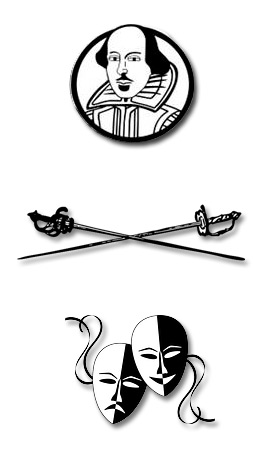
I was then prompt to take center stage. At Lesley’s request, I myself had prepared a small presentation for the cast and crew. Earlier before production had even started, I had taken the time to do some length of research and put together what we call “actor packets”. It’s essentially information packets for the cast and crews’ use, that can cover certain aspects of the play that the dramaturge deems fit to accentuate. For my actor packet, I decided to cover three aspects (apart from the play’s synopsis and background information on the author):
- Societal Disturbances in Sixteenth Century England
- Italian Ideals in Dueling and Insults
- Italian Masque Balls and their influence on English Masque Balls
Knowing beforehand of the director’s intent to emphasize “passion”, I focused my research on these areas because I felt they were some of the contextual sources featured within the plot that inspired this feeling. Talking about the societal disturbances surrounding Shakespeare’s first production of Romeo and Juliet, hints to a possible source of inspiration of the instilled passion within the play, for England was enduring a world of turmoil ranging from disease to political tension.
Italian ideals of dueling and insult is meant to illustrate the Italian’s outmost importance of honor and how they went about protecting it through these dangerous means of dueling—as demonstrated throughout in the feud between the Capulets and Montagues in the play. While the instructing of Masque Balls’ ambiance of discretion, festivity, and freedom was to demonstrate the significance of this setting where Romeo and Juliet’s first meeting.
For the presentation, I gave a summarized version of all this information, with flashcards in hand to keep my thoughts in order. It felt like a school presentation on my part, educating the cast and crew on my findings. The actor’s packet itself, was available for them to peruse at their leisure if they choose to do so.
Some Final Words
Putting together these packets was actually quite interesting, because after all my choices of research were based off my own curiosities, I certainly learned a lot. I hope my enthusiasm showed forth and that I was able to teach the cast and crew something new, perhaps contributing a bit to their own individual work within the production. In the end, that’s all I hope for. I’m a humble servant to the inner workings of this production, and being granted the space to help through these means of an associate dramaturgy makes it all worthwhile.
Attending the First Production Meeting of Romeo and Juliet
Give Me Passion!
 With script in hand, I headed to the first production meeting where all the cast and crew were at attendance to hear of the director’s vision for the show, see the design concept, and engage in the table read of the whole script by the cast. Warmly greeted by director Lesley Currier, I slipped right into the action, taking a place at the table and listening in on the brilliant ideas.
With script in hand, I headed to the first production meeting where all the cast and crew were at attendance to hear of the director’s vision for the show, see the design concept, and engage in the table read of the whole script by the cast. Warmly greeted by director Lesley Currier, I slipped right into the action, taking a place at the table and listening in on the brilliant ideas.
As discussion commenced, the word that stuck out most was “passion”, the all too knowing theme in this tragic romance of a play such as Romeo and Juliet. In this modern world of order and the routine of day to day conduct that we tend to live by, we find that this intense feeling of passion has become a rarity, something not really relished when it actually occurs. This play wants to go back to a time when such a feeling was abundant and people so readily indulged in. We want the audience to acknowledge this natural part of ourselves through the play’s exploration of it, for it’s essentially the essence of feeling alive.
It’s clear that this concept of passion has been integrated into the overall design of the production. Taking a good look at the costume sketches and the 3-D model of the set, Currier gave an interesting explanation for the color palette. I want to delve into these ideas a little further, there is a great significance in the use of color here that should be acknowledged, for it brilliantly demonstrates our production’s focus on the theme of passion.
White and Black. Some Gray. Red!
 Director Lesley Currier has adopted a brilliant color pallet to emphasize these concepts of duality between the feuding families, their neutral counterparts, and the raging passion that rips through these orderly hues.
Director Lesley Currier has adopted a brilliant color pallet to emphasize these concepts of duality between the feuding families, their neutral counterparts, and the raging passion that rips through these orderly hues.
White and black are the defining hues of the two families at odds, the Capulets and the Montagues. Though these two colors are commonly paired as the outmost contrasting shades, one being the darkest color and the other the lightest, their only difference lies in their hue, similar to the description of the two feuding families given in the chorus “two households, both alike in dignity” but indifferent due to an “ancient grudge”. Identifying these two groups in these commonly contrasting colors also makes them more clearly defined as enemies. There is also something very orderly in how cleanly divided these groups are, and decking them out in these colors presses on this all the more.
Grays shall be fashioned by those who aren’t personally involved in the feud, the supporting characters that can seamlessly move between the two families. This includes characters such as Friar Lawrence, Nurse, the Prince, and even the young Paris. The metaphor is clear, gray being the mix of both opposing colors black and white, would naturally be a fitting hue to those who aren’t personally involved in the feud.
Red, naturally alarming in nature and the very hue that personifies the blush of human passion will make sudden appearances throughout the play, in moments of passion whether it be that of anger or lust. Such a bright color it will stand out against the other hues of black and white, staining their mundane methodical appearance to further prove that passion thrives despite our efforts to keep things in order.
Conclusion
Hearing in on the actor’s read of the script was quite a treat. Seeing the actor’s play around with their lines had me quite engaged, from stifling a laugh at those moments of humor to falling somber by the intensity of those more serious instances. I could see the actor’s harmoniously connecting with their fellow cast mates, which is nice to see so early in production as well as assuring, considering the intimacy of the content. I have high hopes for this production and can’t wait to see how it progresses as post production work continues

